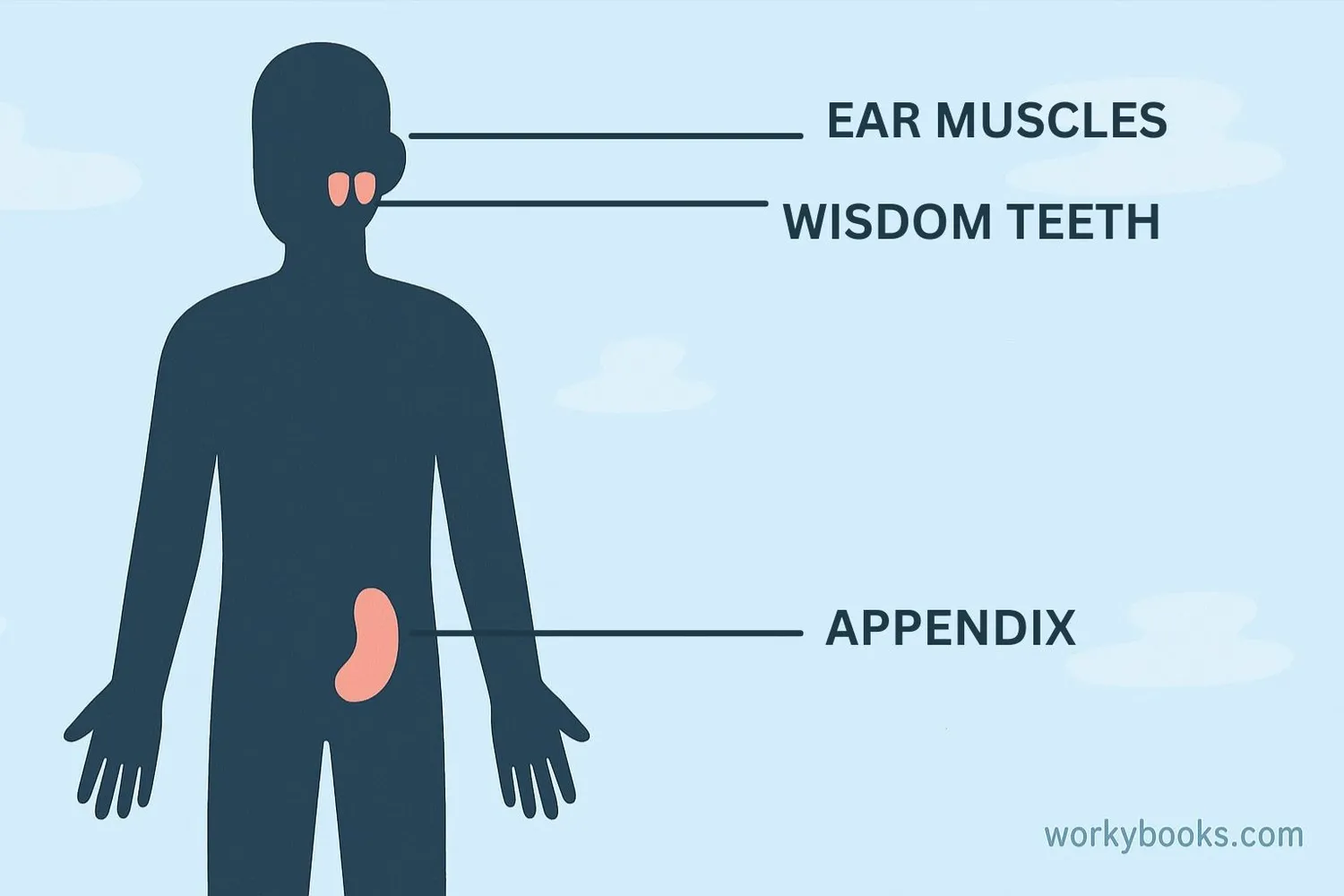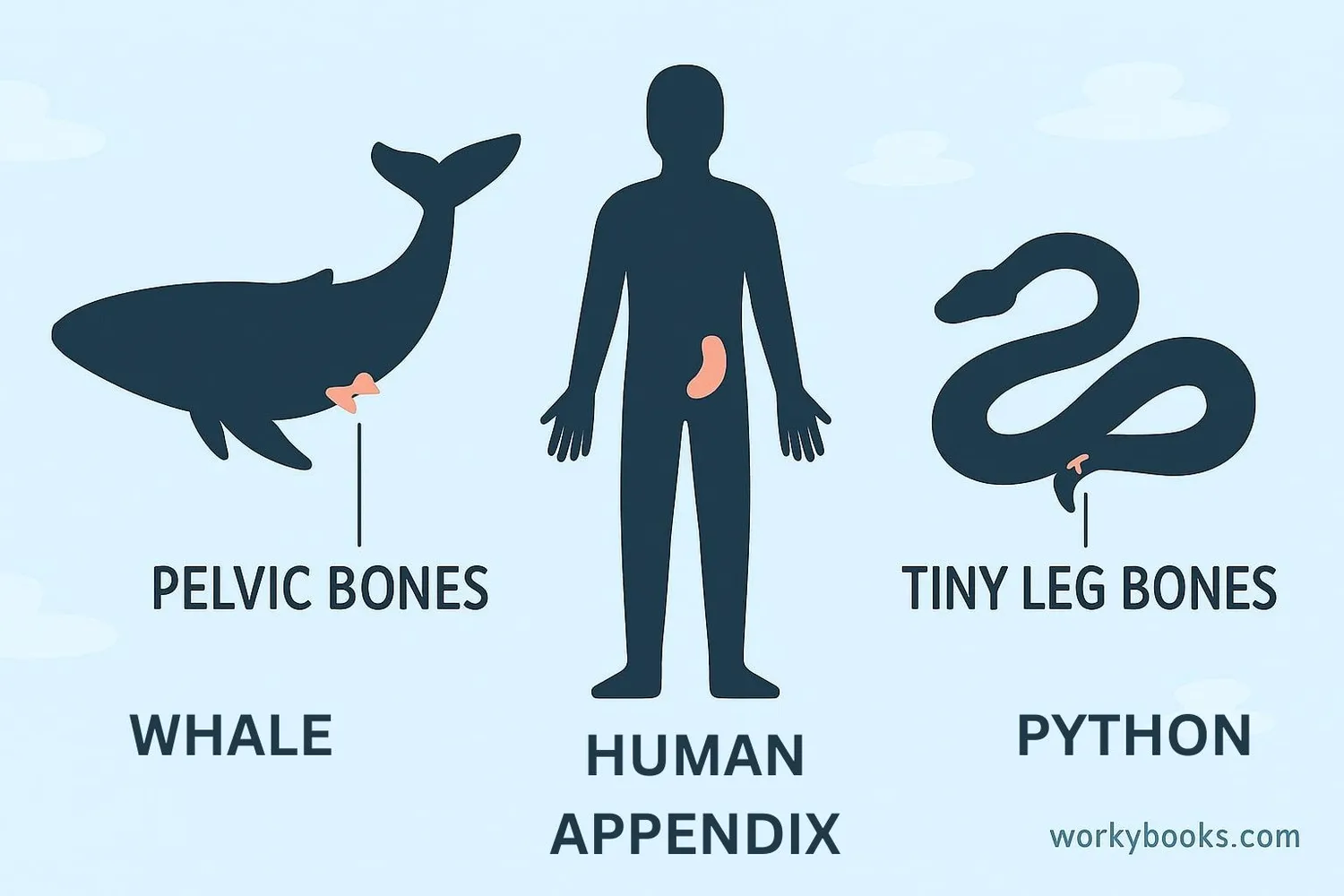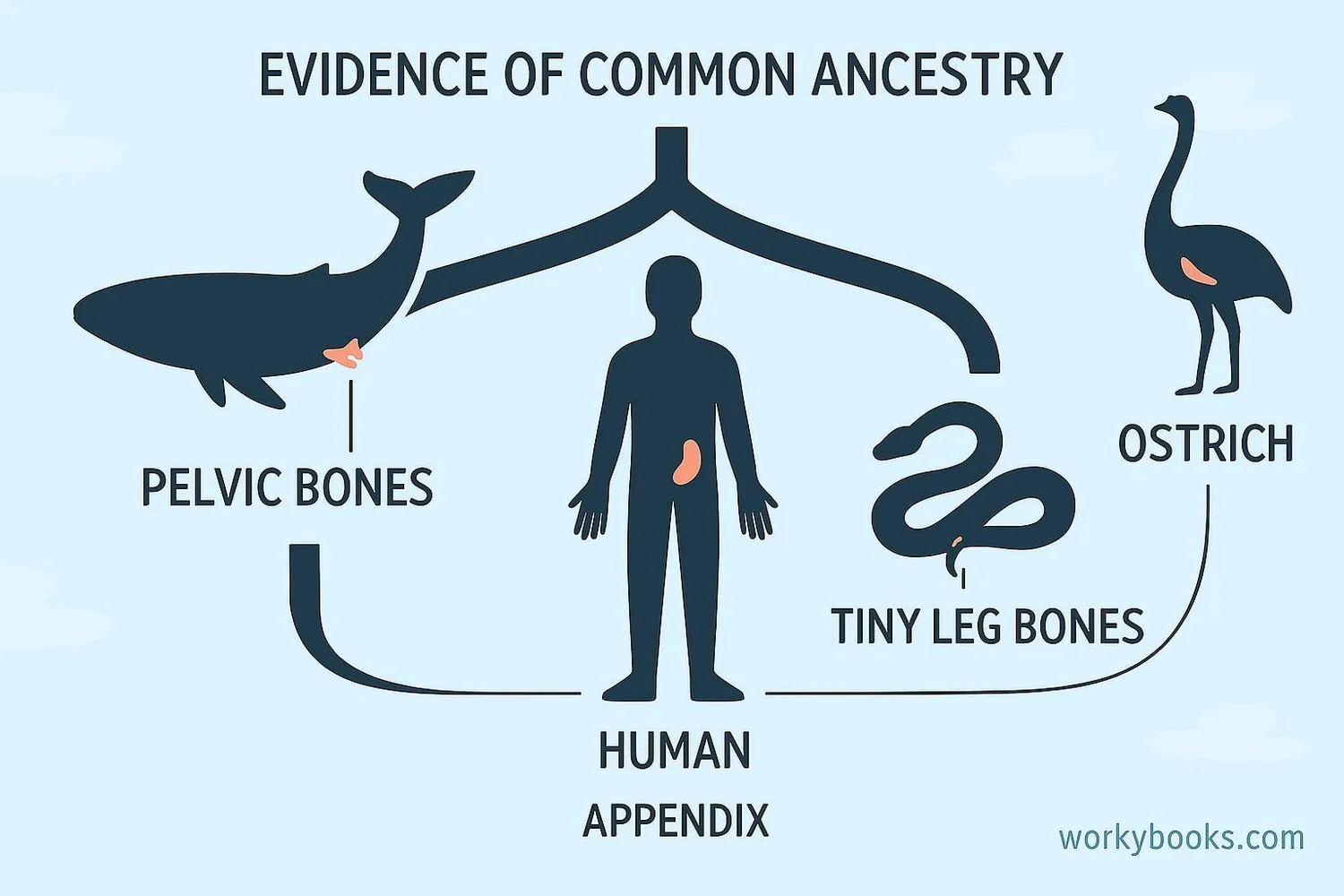Vestigial Structures - Definition, Examples, Quiz, FAQ, Trivia
Discover body parts that have lost their original function through evolution
What Are Vestigial Structures?

Vestigial structures are body parts that have lost most or all of their original function through evolution. These structures were useful to our ancestors but are no longer needed for our survival.
Think of them like leftover instructions from our evolutionary history! Just like you might have an old toy you don't play with anymore but still keep, our bodies have parts that were important to our ancestors but aren't as useful to us today.
Key Point
Vestigial structures provide evidence for evolution by showing how species have changed over time.
Examples of Vestigial Structures

Vestigial structures can be found in humans and many other animals. Here are some common examples:
Human Appendix
A small tube attached to the large intestine that may have helped digest cellulose in our plant-eating ancestors
Wisdom Teeth
Third molars that were useful for chewing tough plants but are often unnecessary now
Coccyx (Tailbone)
The remnant of a tail that our primate ancestors used for balance
Goosebumps
Muscles that make body hair stand up - useful for furry animals to stay warm or look bigger
Ear Muscles
Tiny muscles that some animals use to move their ears to hear better
Animals have vestigial structures too:
- Whales have tiny pelvic bones left over from when their ancestors walked on land
- Pythons have tiny leg bones buried in their muscles
- Blind cave fish have eye structures even though they can't see
- Flightless birds like ostriches have wings
Why Vestigial Structures Are Important

Vestigial structures are important because they provide evidence for evolution. They show how species have changed over time and demonstrate common ancestry between different organisms.
Evidence of Evolution
They show how organisms have changed from their ancestors over millions of years
Common Ancestry
Similar vestigial structures in different species suggest shared ancestors
Evolutionary History
They help scientists understand how organisms lived in the past
Charles Darwin pointed to vestigial structures as important evidence for his theory of evolution by natural selection. He noted that these "useless or nearly useless" organs made sense if species had evolved from ancestors in which these structures were functional.
Science Connection
Vestigial structures are like clues in a mystery - they help scientists piece together the story of how life has changed over billions of years.
Vestigial Structures Quiz
Test your knowledge about vestigial structures with this quiz. Answer all 5 questions to see how much you've learned.
Frequently Asked Questions
Here are answers to some common questions about vestigial structures:
Interesting Facts About Vestigial Structures
Discover some fascinating information about vestigial structures:
Evolutionary Time Capsules
Vestigial structures are like time capsules from our evolutionary past. They provide physical evidence of traits that were useful to our ancestors millions of years ago.
Human Vestiges
Humans have more than 100 vestigial structures! These include muscles that move ears, wisdom teeth, the appendix, the tailbone, and even goosebumps.
Flightless Birds
Ostriches, emus, and other flightless birds have wings that are vestigial structures. Though they can't fly, they sometimes use their wings for balance, mating displays, or shade for their chicks.
Genetic Leftovers
Some vestigial structures are also found at the genetic level! Humans have hundreds of broken genes called pseudogenes that no longer function but are similar to working genes in other animals.





